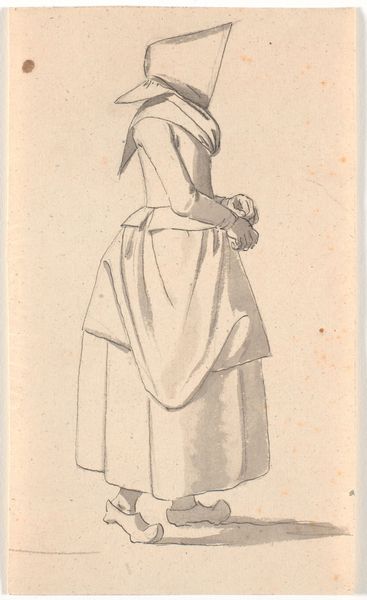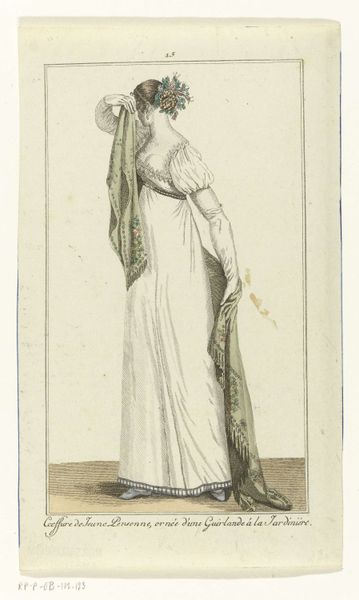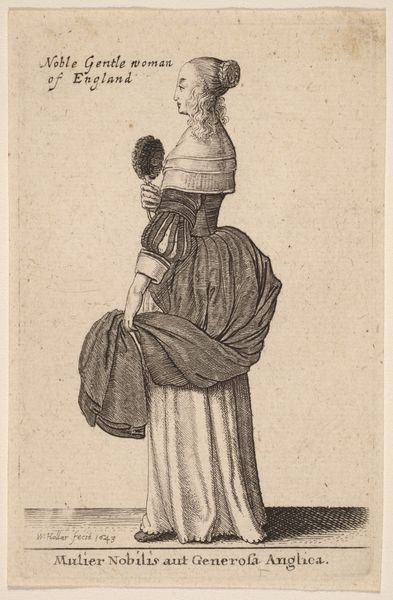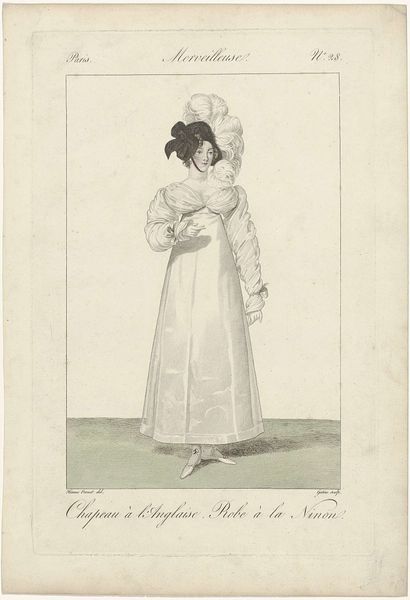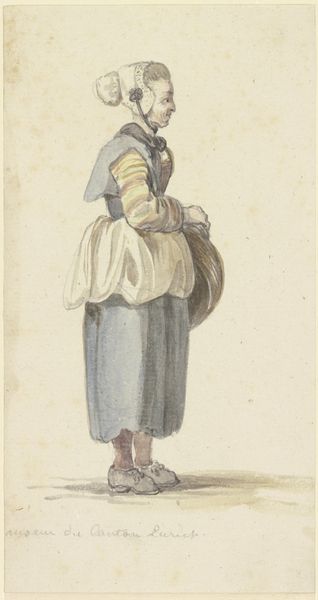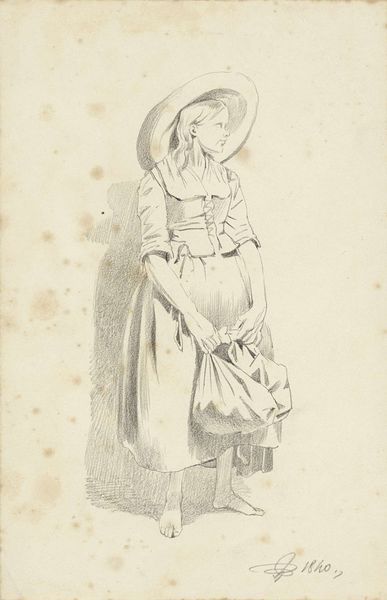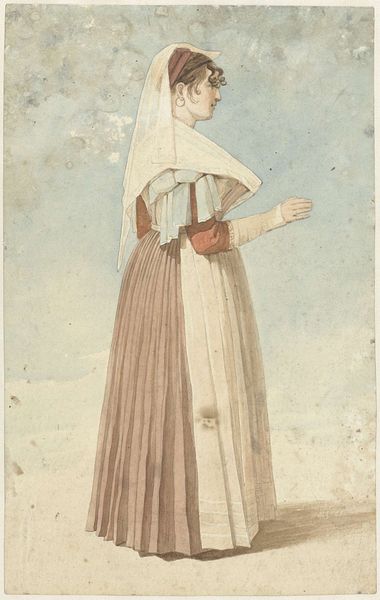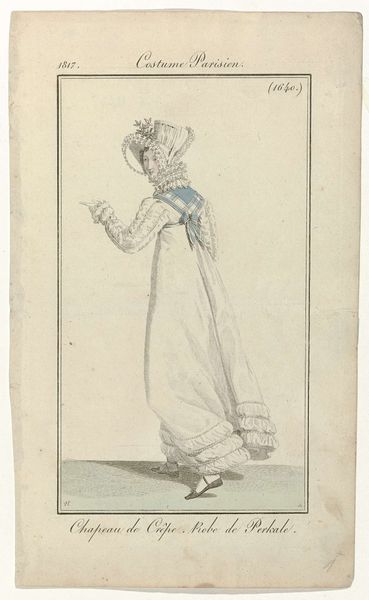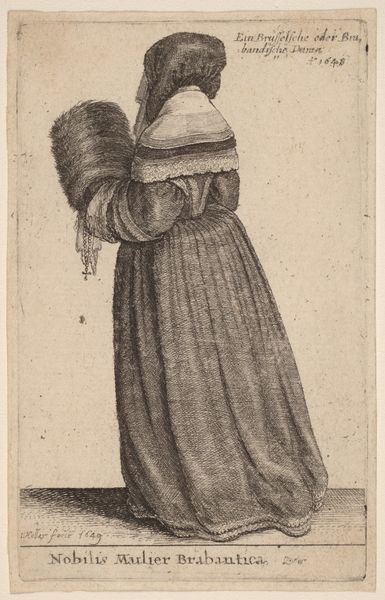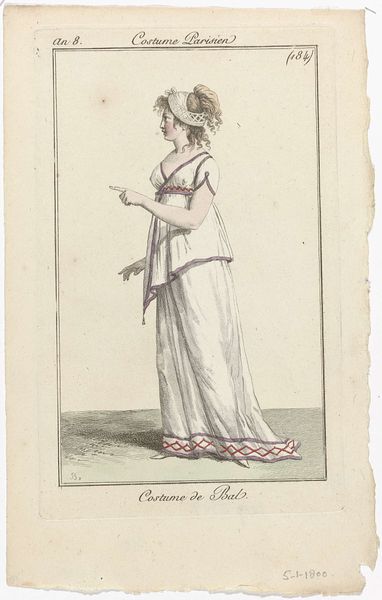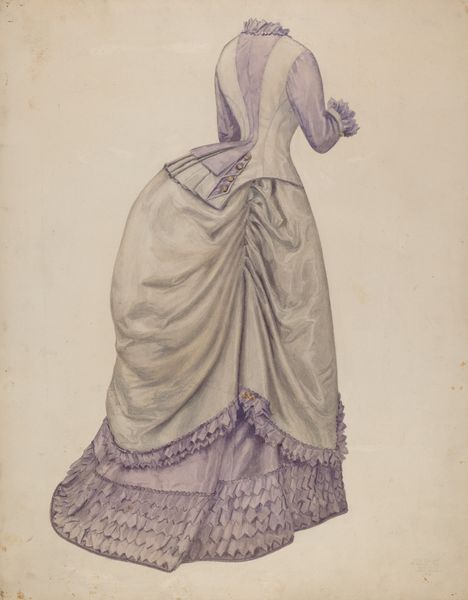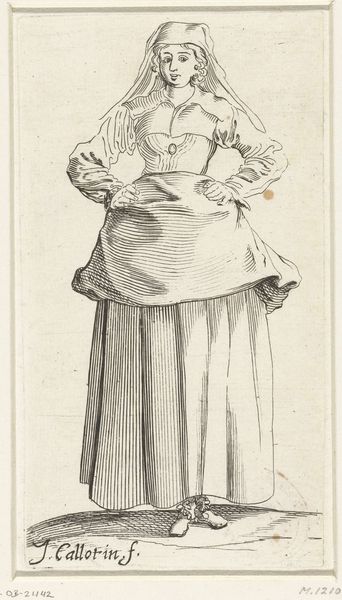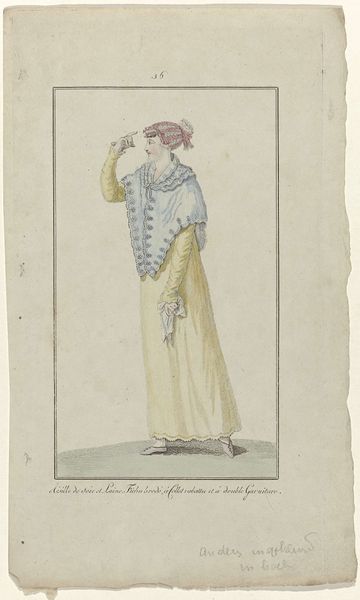
drawing
#
portrait
#
drawing
#
academic-art
#
realism
Dimensions: 287 mm (height) x 181 mm (width) (bladmaal)
Curator: Standing before us is a drawing titled "Italienerinde," or "Italian Woman," created around 1840 by Martinus Rørbye. It resides here at the SMK, the National Gallery of Denmark. Editor: It has a lovely, gentle quality, wouldn't you say? A soft, muted palette. There's almost a melancholic air about her, gazing pensively. Curator: Rørbye was a part of the Danish Golden Age of painting. These artists were interested in realism and portraying subjects and scenes from everyday life in a rather idealized way. He traveled extensively, and drawings like these would serve as preparatory studies. Editor: The attire seems so meticulously rendered. I’m drawn to the way the shawl or cloth hangs in her hands; the embroidery feels very precious, indicative of the craftsmanship and the place of textiles in this woman's life and community. Curator: Precisely. The details of the traditional costume—the colorful headdress and distinct style of dress—reflect the artist’s fascination with documenting the cultures he encountered during his travels. It really speaks to the interest in national identity formation occurring across Europe at this time, with the rise of nation-states. Editor: It is also a good case study on representation. As an outsider looking in, it really begs us to consider questions surrounding who gets to depict whom and from what perspective. Is this truly *her* story, or the artist’s interpretation for a Danish audience? Curator: That’s a critical point. These works certainly circulated within specific artistic circles and undoubtedly shaped perceptions, as well as reinforcing particular class-based and cultural viewpoints. The artistic creation and viewing were structured through filters like education, artistic license and travel. Editor: Exactly. It reminds us of the responsibility art has, even when depicting what might seem like simple observations, to be aware of its broader cultural influence. Ultimately this also opens up discourse, allowing audiences to think about how social perceptions shape artistic approaches. Curator: And how artistic representation actively builds our social perceptions. I leave today, pondering the gaze and this work's cultural position as part of Denmark's visual history. Editor: A somber reminder about how we see, and more importantly, how we should be seeing and discussing. This has opened my own eyes a little wider.
Comments
No comments
Be the first to comment and join the conversation on the ultimate creative platform.
